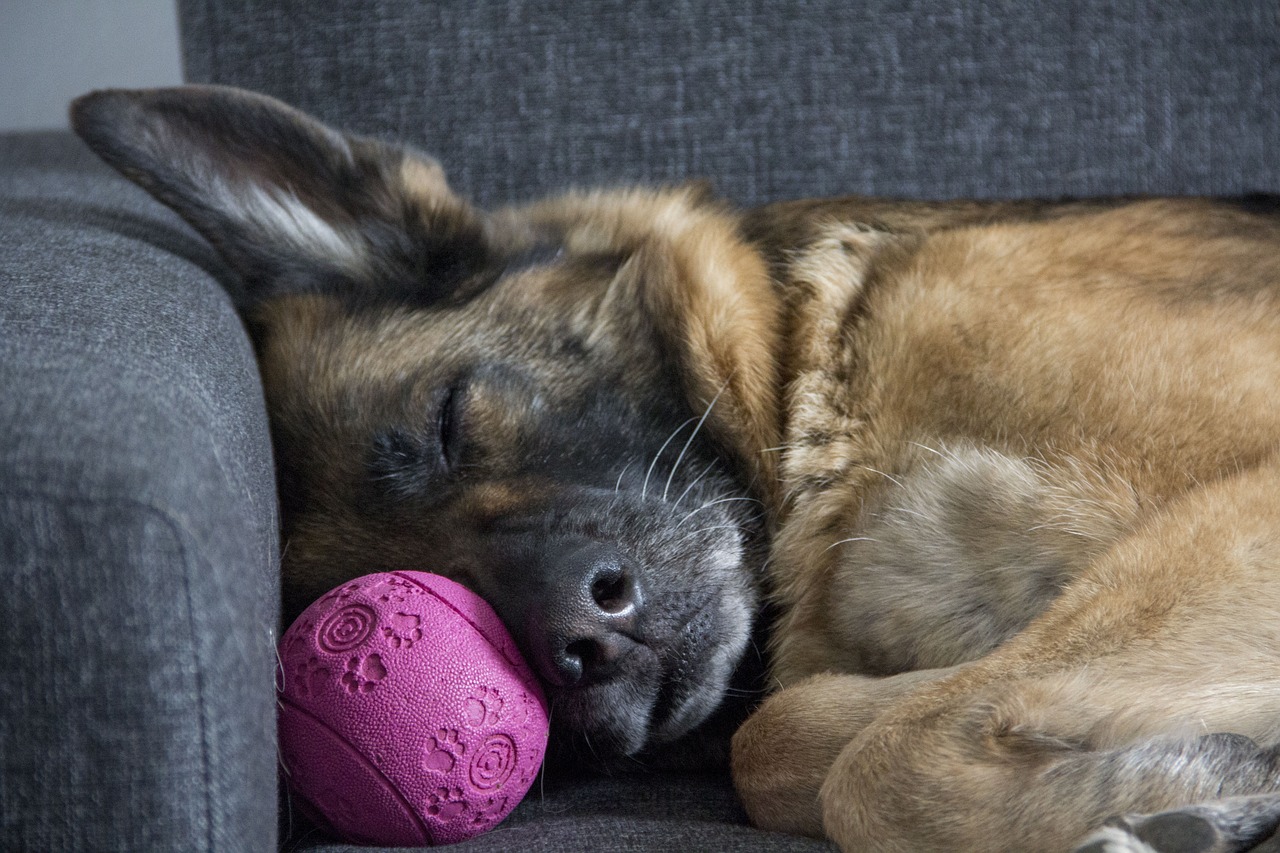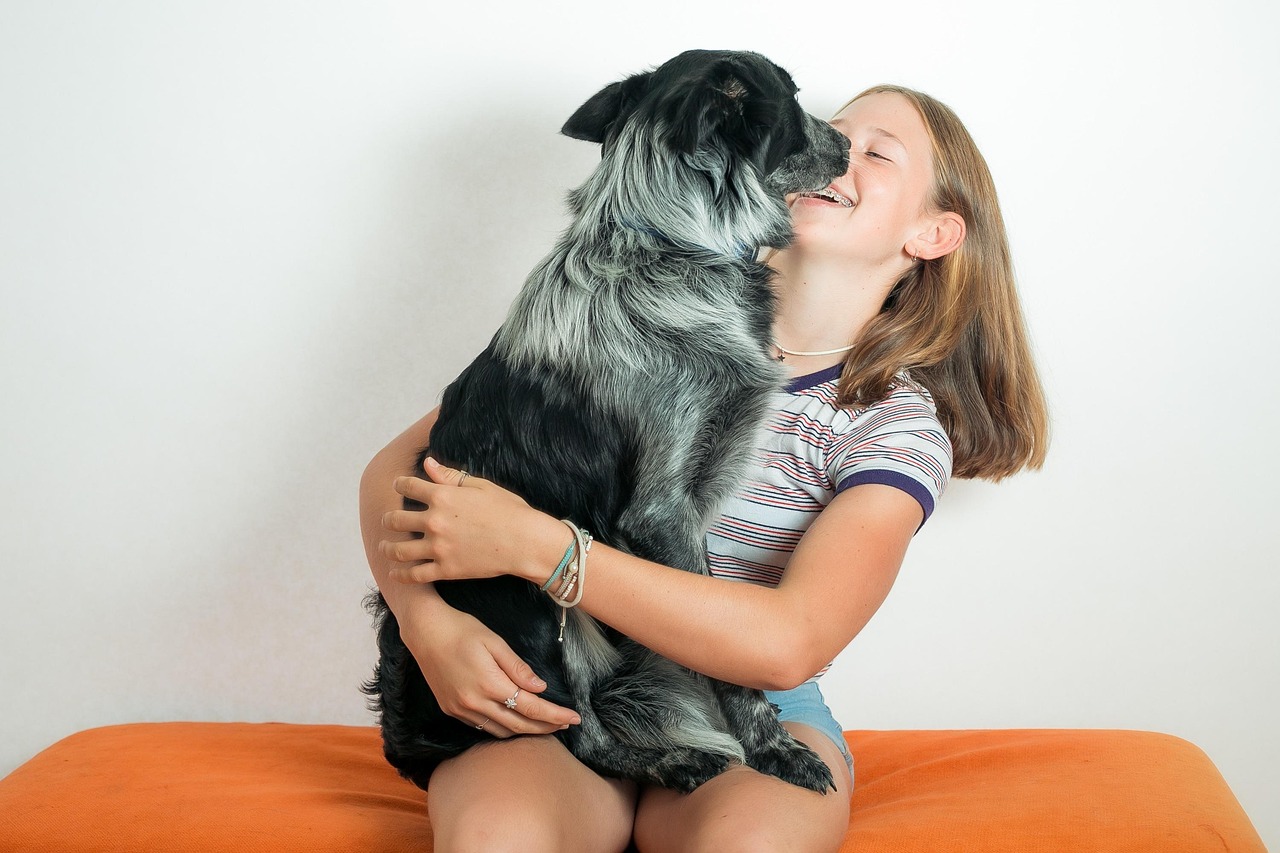This article explores the implications of sharing your bed with your dog, including health considerations, behavioral impacts, and practical tips for creating a comfortable sleeping environment for both you and your pet.
The Benefits of Sharing Your Bed with Your Dog
Sharing your bed with your dog can significantly enhance your bond. This arrangement provides emotional comfort and a sense of security for both you and your furry friend. Studies suggest that the presence of a pet can reduce stress and promote relaxation, leading to improved mental well-being.
Potential Health Risks of Sleeping with Your Dog
Despite the emotional benefits, there are potential health risks to consider. Allergies and sleep disturbances are common concerns among pet owners. Understanding these risks is crucial for anyone contemplating sharing their sleeping space.
- Allergies and Asthma Concerns: Pet dander can trigger allergic reactions and asthma attacks in sensitive individuals. This can be exacerbated when sharing a bed.
- Understanding Pet Dander: Pet dander consists of tiny, lightweight particles that can linger in the air and on bedding.
- Mitigating Allergy Symptoms: Regular cleaning and using hypoallergenic bedding can help manage these symptoms.
Sleep Quality and Disruption
Dogs can be restless at night, which may disrupt your sleep. Understanding your dog’s nighttime behavior is essential for maintaining good sleep quality. Consider establishing a routine that encourages calmness during bedtime.
Behavioral Considerations When Sharing Your Bed
Understanding your dog’s behavior is crucial when sharing a bed. Setting clear boundaries and rules can ensure that both you and your dog have a comfortable sleeping experience.
- Establishing Boundaries: Creating rules about where your dog can sleep on the bed can help maintain a peaceful environment.
- Impact on Training and Independence: Sharing your bed may influence your dog’s training and independence, potentially leading to separation anxiety.
Creating a Comfortable Sleeping Environment for Both
To ensure a good night’s sleep for both you and your dog, consider the following tips:
- Choosing the Right Bedding: Select comfortable bedding that accommodates both you and your dog.
- Alternative Sleeping Arrangements: If sharing a bed isn’t ideal, consider dog beds or crates that provide comfort and security for your pet.
Conclusion: Is Sharing Your Bed Right for You?
Ultimately, the decision to share your bed with your dog depends on individual circumstances. Weighing the benefits against potential health risks will help you make an informed choice. Remember, the goal is to ensure a restful night for both you and your beloved pet.

The Benefits of Sharing Your Bed with Your Dog
Sharing your bed with your dog can significantly strengthen the bond between you and your furry companion. This intimate arrangement not only fosters emotional connections but also provides a sense of security and comfort for both parties. In this section, we will explore the various psychological and physical benefits that come with this cozy practice.
- Enhanced Emotional Bond: Sleeping next to your dog can create a deeper emotional connection. The presence of your pet can evoke feelings of love and companionship, which are vital for mental well-being.
- Reduced Anxiety: The soothing presence of a dog can alleviate feelings of anxiety and stress. Studies have shown that petting a dog can lower cortisol levels, leading to a more relaxed state.
- Improved Sleep Quality: Many pet owners report better sleep quality when sharing their bed. The rhythmic breathing of a dog can have a calming effect, promoting a restful night.
- Increased Sense of Security: Having a dog in bed can enhance your sense of safety. Their natural instincts to protect their owners can provide a comforting layer of security, especially during the night.
- Physical Warmth: Dogs naturally provide warmth, which can be especially comforting during colder months. This shared body heat can make for a more cozy and inviting sleeping environment.
Moreover, the act of sharing a bed can encourage a routine of affectionate interactions between you and your dog, strengthening your relationship. Regular cuddling and petting can enhance the release of oxytocin, often referred to as the “love hormone,” which plays a significant role in bonding.
In conclusion, while the decision to share your bed with your dog may vary based on personal preferences and circumstances, the psychological and physical benefits are compelling. This practice not only nurtures a loving relationship but also contributes to emotional and physical well-being for both you and your beloved pet.

Potential Health Risks of Sleeping with Your Dog
Sharing your bed with your dog can create a warm and comforting environment, but it’s essential to be aware of the potential health risks associated with this practice. While the emotional benefits of having your furry friend close by are undeniable, there are several health considerations that pet owners should keep in mind.
One of the primary health risks of sharing a bed with your dog is the potential for allergic reactions. Pet dander, which consists of tiny particles shed from your dog’s skin and fur, can trigger allergies and asthma in sensitive individuals. This can lead to symptoms such as sneezing, itching, and respiratory issues, making it crucial to understand how sharing your sleeping space might exacerbate these conditions.
Pet dander is a common allergen that can linger in your home and bedding. It is made up of proteins found in a dog’s skin, saliva, and urine. For those with existing allergies, exposure to pet dander can lead to increased discomfort and health challenges. Knowing what pet dander is and how it affects your health is vital for pet owners.
If you decide to share your bed with your dog, there are several strategies to help reduce allergy symptoms. Regular cleaning of bedding and using hypoallergenic materials can significantly minimize allergens. Additionally, consider using air purifiers and frequently bathing your dog to decrease the amount of dander in your home.
Another concern is the potential disruption of sleep quality. Dogs can be restless at night, leading to sleep disturbances for their human companions. Factors such as barking, moving around, or needing to go outside can interrupt your sleep cycle. Understanding how your dog’s behavior can impact your rest is essential for maintaining overall well-being.
To mitigate sleep disruptions, consider establishing a bedtime routine for your dog that includes exercise and bathroom breaks before sleep. Additionally, creating a designated sleeping area for your dog within the same room can allow for closeness while minimizing disturbances during the night.
In conclusion, while sharing your bed with your dog can foster a strong bond, it is crucial to consider the health risks involved. By understanding allergies, sleep disruptions, and implementing practical strategies, pet owners can make informed decisions that benefit both their health and their dog’s well-being.
Allergies and Asthma Concerns
When it comes to sharing your bed with your dog, one of the significant concerns is the potential for exacerbating allergies and asthma in sensitive individuals. Understanding how pet dander affects health is crucial for pet owners who wish to maintain a comfortable sleeping environment.
Pet dander is composed of tiny, lightweight flakes of skin shed by cats, dogs, and other furry pets. These particles can easily become airborne and settle on various surfaces, including bedding. For those with allergies or asthma, exposure to pet dander can trigger a range of symptoms, including sneezing, nasal congestion, and difficulty breathing.
Sharing your bed with your dog may increase your exposure to these allergens, especially if your dog is not bathed regularly or if they spend a lot of time outdoors. In this section, we will discuss how to manage these concerns effectively.
Pet dander is not only a byproduct of shedding fur but also includes proteins found in saliva, urine, and feces. These proteins can provoke allergic reactions in sensitive individuals. Understanding the nature of pet dander can help pet owners take proactive measures to minimize its impact.
- Regular Cleaning: Frequent vacuuming and dusting can help reduce the accumulation of pet dander in your home.
- Hypoallergenic Bedding: Using hypoallergenic mattress and pillow covers can create a barrier against allergens.
- Air Purifiers: Investing in HEPA air purifiers can significantly reduce airborne allergens in your bedroom.
- Bathing Your Dog: Regular baths can help minimize the amount of dander your dog sheds.
By implementing these strategies, pet owners can enjoy the emotional and psychological benefits of sharing a bed with their dog while managing allergy and asthma symptoms effectively.
In conclusion, while sharing your bed with your pet can enhance your bond, it’s essential to be aware of the potential health risks. By understanding pet dander and taking proactive measures, you can create a comfortable sleeping environment for both you and your furry friend.
Understanding Pet Dander
Pet dander is comprised of tiny, often invisible particles that are shed from the skin, fur, and feathers of pets, particularly cats and dogs. These particles can trigger allergic reactions in sensitive individuals, causing symptoms such as sneezing, itching, and respiratory issues. Understanding the nature of pet dander is crucial for anyone considering sharing their living space, especially their bed, with a furry friend.
What is Pet Dander?
Pet dander consists mainly of proteins found in the saliva, skin, and urine of animals. When pets groom themselves, these proteins are transferred to their fur and skin, which then flakes off as dander. This process can create a significant amount of allergens in the environment, particularly in homes with multiple pets. The particles are so small that they can remain airborne for extended periods and settle on surfaces, making them difficult to eliminate completely.
How Does Pet Dander Affect Allergy Sufferers?
- Allergic Reactions: Many people experience allergic reactions when exposed to pet dander, which can range from mild to severe.
- Asthma Triggers: For individuals with asthma, pet dander can exacerbate symptoms and lead to more frequent attacks.
- Long-Term Effects: Continuous exposure to allergens can lead to chronic respiratory issues and increased sensitivity over time.
Identifying Symptoms:
Common symptoms of pet dander allergies include:
- Runny or stuffy nose
- Itchy or watery eyes
- Coughing or wheezing
- Skin rashes or hives
Conclusion:
Understanding pet dander is essential for managing allergies effectively. If you or someone in your household is prone to allergies, it is important to consider the implications of sharing a bed with your dog. Taking preventive measures, such as regular cleaning and using hypoallergenic bedding, can help mitigate the effects of pet dander and create a more comfortable living environment.
Mitigating Allergy Symptoms
If you decide to share your bed with your furry friend, it is essential to take proactive measures to minimize allergy symptoms. Many pet owners may experience discomfort due to allergens like pet dander, saliva, and urine. However, with the right strategies, you can create a more comfortable sleeping environment.
- Regular Cleaning: Establish a routine for cleaning your bedding and bedroom. Wash your sheets, pillowcases, and blankets weekly in hot water to eliminate allergens. Additionally, vacuum your mattress and surrounding areas frequently to remove pet hair and dander.
- Use Hypoallergenic Bedding: Invest in hypoallergenic mattress covers and pillow protectors. These products are designed to prevent allergens from accumulating, providing a barrier between you and your pet’s dander.
- Groom Your Dog Regularly: Regular grooming can significantly reduce the amount of dander and hair your dog sheds. Consider brushing your dog outside to keep allergens from settling indoors.
- Air Purifiers: Utilize HEPA air purifiers in your bedroom to filter out pet allergens from the air. These devices can help improve air quality and reduce the concentration of irritants.
- Designate Pet-Free Zones: Create areas in your home where pets are not allowed, especially in the bedroom. This can help limit the amount of dander and hair that accumulates in your sleeping environment.
By implementing these practical tips, you can enjoy the companionship of your dog while minimizing the impact of allergens. Remember that every individual’s sensitivity to allergens varies, so it’s crucial to monitor your symptoms and adjust your strategies accordingly.
Sleep Quality and Disruption
Sharing your bed with your dog can be a delightful experience, but it can also lead to disrupted sleep and reduced sleep quality. Many pet owners find that their furry friends tend to be restless at night, which can have a significant impact on their overall well-being. In this section, we will explore how a dog’s nighttime behavior can affect your sleep and provide practical strategies to mitigate these disturbances.
Dogs are naturally active creatures, and their sleep patterns can differ greatly from ours. While we tend to sleep in long, uninterrupted cycles, dogs may experience shorter sleep phases and can wake up frequently. This can be particularly disruptive if your dog is prone to tossing and turning, barking, or needing to go outside during the night. Such behaviors can lead to fragmented sleep for pet owners, resulting in fatigue and decreased productivity during the day.
- Understanding Your Dog’s Sleep Needs: Recognizing that dogs have different sleep requirements is crucial. Puppies and active breeds may need more exercise during the day to help them settle down at night.
- Establishing a Routine: Creating a consistent bedtime routine can signal to your dog that it’s time to wind down. This might include a final walk, quiet time, or even a calming massage.
- Designating a Sleep Space: If your dog’s movements disrupt your sleep significantly, consider providing a comfortable dog bed nearby. This allows them to feel close while having their own space.
Additionally, if your dog tends to snore or has a habit of shifting positions frequently, it may be helpful to invest in a high-quality dog bed that offers support and comfort. This can reduce restlessness and help your dog sleep more soundly, ultimately benefiting your sleep as well.
In conclusion, while sharing your bed with your dog can be a rewarding experience, it is essential to be aware of the potential for sleep disruption. By understanding your dog’s needs and implementing effective strategies, you can create a more harmonious sleeping environment that promotes better sleep quality for both you and your furry companion.

Behavioral Considerations When Sharing Your Bed
When you decide to share your bed with your dog, understanding their behavior becomes essential. This arrangement can significantly influence your dog’s behavior and training, and it’s important to consider both the benefits and potential challenges that come with this close proximity.
- Bonding and Comfort: Sharing a bed can enhance the emotional bond between you and your dog. The warmth and closeness provide comfort, helping your pet feel secure and loved.
- Behavioral Changes: Dogs may exhibit different behaviors when they sleep with their owners. For instance, they might become more protective or territorial, which can affect their interactions with other pets or people.
- Training Implications: This arrangement can impact your dog’s training. If they are used to sleeping in your bed, they may struggle with independence and may develop separation anxiety when left alone.
To ensure a positive experience, it’s crucial to establish clear boundaries. Here are some strategies to consider:
1. Set Sleeping Rules: Decide whether your dog can jump on and off the bed freely or if they should stay in a designated spot.2. Encourage Independence: Gradually train your dog to sleep in their own bed or crate to foster independence.3. Monitor Behavior: Pay attention to any changes in behavior, such as increased anxiety or restlessness, and adjust your arrangement accordingly.
In conclusion, understanding your dog’s behavior is vital when sharing a bed. By setting boundaries and being mindful of their training needs, you can create a harmonious sleeping environment that benefits both you and your furry friend.
Establishing Boundaries
is crucial when it comes to creating a peaceful and comfortable sleeping arrangement with your dog. Without clear rules, both you and your furry friend may experience discomfort, leading to disrupted sleep and increased stress. This section outlines effective strategies to set boundaries, ensuring that both you and your dog can enjoy restful nights.
First and foremost, it’s essential to define sleeping zones. Consider designating specific areas in your bed for both you and your dog. For instance, you might choose to allow your dog to sleep at the foot of the bed, which can help maintain your personal space while still keeping your pet close. This physical separation can prevent disturbances during the night, allowing both of you to sleep more soundly.
Next, establish a consistent bedtime routine. Dogs thrive on routine, and having a set schedule can help signal to your pet when it’s time to settle down. This might include a short walk, some playtime, or even a calming massage before bed. By incorporating these activities, your dog will associate these cues with bedtime, making it easier for them to relax and settle in for the night.
Additionally, consider using positive reinforcement to encourage desired behaviors. If your dog respects the boundaries you’ve set, reward them with treats or praise. This not only reinforces good behavior but also strengthens the bond between you and your pet. Conversely, if your dog crosses established boundaries, gently redirect them back to their designated area without punishment.
Lastly, be flexible and willing to adjust your boundaries as needed. Every dog is unique, and what works for one may not work for another. Monitor your dog’s behavior and sleep patterns, and be open to making changes if necessary. Establishing boundaries is an ongoing process that requires patience and understanding from both you and your dog.
In conclusion, setting clear boundaries is vital for a harmonious sleeping arrangement. By defining sleeping zones, creating a consistent routine, using positive reinforcement, and remaining adaptable, you can ensure that both you and your dog enjoy a comfortable and restful night’s sleep.
Impact on Training and Independence
When it comes to dog training and fostering independence, the decision to share your bed with your canine companion can have significant implications. While it may be comforting for both you and your dog, this arrangement can inadvertently affect their behavior and training outcomes.
One of the primary concerns is separation anxiety. Dogs that sleep in close proximity to their owners may become overly reliant on their presence, making it challenging for them to be left alone during the day. This can lead to destructive behaviors, excessive barking, or even accidents in the house when they feel abandoned. To mitigate this, it is essential to gradually acclimate your dog to being alone for short periods, reinforcing their independence while still providing emotional support.
Moreover, sharing your bed can influence your dog’s obedience levels. Dogs that view their owners as equals may struggle to understand their role within the household. This can complicate training sessions and lead to behavioral issues. Establishing clear boundaries is vital; for instance, allowing your dog to sleep in their own space while still enjoying time together during the day can help reinforce their understanding of the hierarchy.
Additionally, it’s important to consider the impact of this sleeping arrangement on your dog’s overall socialization. Dogs that are accustomed to being close to their owners may become less tolerant of other pets or unfamiliar situations, as they may not have had the opportunity to develop confidence away from their human companions. Encouraging independent play and social interactions with other dogs can help counteract this tendency.
In conclusion, while sharing your bed with your dog can strengthen your bond, it is crucial to be mindful of the potential effects on their training and independence. By setting boundaries and promoting independence, you can enjoy the comfort of having your dog close while ensuring they develop into well-adjusted and obedient companions.

Creating a Comfortable Sleeping Environment for Both
Creating a comfortable sleeping environment is essential for ensuring both you and your dog enjoy a restful night. This involves thoughtful consideration of bedding choices and overall arrangements that cater to the needs of both parties.
When it comes to bedding, selecting the right materials can make a significant difference in sleep quality. Here are some options to consider:
- Memory Foam Mattresses: These provide excellent support and contouring, ensuring a comfortable surface for both you and your dog.
- Orthopedic Dog Beds: Ideal for older dogs or those with joint issues, these beds provide the necessary support and comfort.
- Cooling Gel Pads: If you live in a warmer climate, these pads can help regulate temperature, making it comfortable for both you and your pet.
It’s not just about the bedding; the overall arrangement plays a crucial role in comfort. Consider the following:
- Designate a Space: If sharing a bed, ensure there is enough space for both you and your dog to stretch out comfortably.
- Use Dog Blankets: Placing a soft blanket on your bed can create a designated area for your dog, helping to keep your bedding clean.
- Maintain a Calm Environment: Dim lighting and minimal noise can create a serene atmosphere conducive to sleep.
If sharing a bed proves challenging, consider alternative sleeping options:
- Dog Crates: A crate can provide a safe and secure environment for your dog, especially if they are not accustomed to sleeping with you.
- Dog Beds: Placing a comfortable dog bed near your own can help your dog feel close while allowing you both to have your space.
In conclusion, creating a comfortable sleeping environment for both you and your dog involves careful consideration of bedding choices and sleeping arrangements. By prioritizing comfort and establishing a serene atmosphere, you can enhance the quality of sleep for both you and your furry friend.
Choosing the Right Bedding
When it comes to ensuring a good night’s sleep, is essential for both humans and dogs. The right bedding not only enhances comfort but also contributes significantly to overall sleep quality. This section will explore various bedding options that cater to the needs of both you and your furry friend.
For humans, the choice of bedding can vary widely based on personal preferences, sleeping positions, and any specific health concerns. Here are some popular options:
- Memory Foam Mattresses: These mattresses provide excellent support by contouring to the body, alleviating pressure points. They are particularly beneficial for those with joint pain.
- Latex Mattresses: Known for their durability and breathability, latex mattresses are a great option for hot sleepers and those seeking a more eco-friendly choice.
- Adjustable Beds: These beds allow users to customize their sleeping position, which can be especially helpful for individuals with certain medical conditions.
For dogs, selecting the right bed is just as crucial. A comfortable dog bed can help improve your pet’s sleep quality and overall health. Here are some factors to consider:
- Size: Ensure the dog bed is appropriately sized for your dog, allowing them to stretch out comfortably.
- Material: Look for beds made of supportive materials that provide cushioning and warmth, such as orthopedic foam or plush fabric.
- Washability: Choose a bed with removable and machine-washable covers to maintain hygiene easily.
Additionally, consider the sleeping habits of your dog. Some dogs prefer enclosed spaces, while others may enjoy more open beds. Providing options can enhance their comfort and security.
In conclusion, selecting the right bedding for both you and your dog is vital for achieving restful sleep. By understanding the various options available and considering individual needs, you can create a harmonious sleeping environment that benefits everyone.
Alternative Sleeping Arrangements
When it comes to ensuring a good night’s sleep for both you and your furry friend, sharing a bed may not always be the best option. Fortunately, there are several that can provide comfort and security for your pet while also accommodating your needs. This section delves into various options that can create a harmonious sleeping environment.
- Dog Beds: Investing in a high-quality dog bed can significantly enhance your pet’s comfort. Look for beds that offer supportive cushioning and are made from durable materials. Orthopedic beds are especially beneficial for older dogs or those with joint issues.
- Crates: Crate training can be an excellent solution for providing your dog with a safe and secure sleeping space. A crate can serve as a cozy den where your dog feels protected. Ensure the crate is the right size—large enough for your dog to stand, turn around, and lie down comfortably.
- Dog Blankets: If your dog prefers to sleep on the floor, consider providing a soft blanket or mat. This can help keep them warm and comfortable while still allowing them to feel included in the family space.
- Dog Sofa: For those who want to keep their pet close without sharing the bed, a dog sofa can be a great alternative. These small couches can be placed in the bedroom, allowing your dog to sleep nearby while having their own space.
Each of these options not only caters to your dog’s comfort but also helps maintain your own sleep quality. Creating a designated sleeping area for your dog can reduce disturbances during the night, allowing both you and your pet to enjoy restful sleep.
In conclusion, while sharing a bed with your dog has its benefits, exploring alternative sleeping arrangements can lead to a more balanced and peaceful sleeping environment for both you and your beloved pet. By choosing the right option, you can ensure that your furry friend feels safe and secure while also preserving your own comfort.

Conclusion: Is Sharing Your Bed Right for You?
Deciding whether to share your bed with your dog is a significant choice that varies based on personal circumstances and preferences. This decision involves weighing the pros and cons, considering both the emotional and physical implications for you and your furry friend.
On one hand, sharing your bed can foster a deeper emotional connection between you and your pet. The comforting presence of your dog can reduce feelings of loneliness and enhance your overall sense of security. This intimate arrangement often leads to a more peaceful night’s sleep for both parties, as the bond strengthens through shared experiences.
However, it’s essential to consider potential health risks. For individuals with allergies or asthma, sharing a bed with a dog can exacerbate symptoms due to pet dander and other allergens. Furthermore, a dog’s nighttime movements may disrupt your sleep quality, leading to fatigue and irritability during the day. Understanding these factors is crucial in making an informed decision.
Another aspect to contemplate is the behavioral impact on your dog. While sharing your bed may provide comfort, it can also influence your dog’s training and independence. Establishing clear boundaries is vital to ensure that both you and your dog enjoy a restful night without compromising your respective needs.
Ultimately, the choice to share your bed with your dog should be made after careful consideration of these factors. Reflect on your personal health, your dog’s behavior, and the overall dynamics of your living situation. By doing so, you can arrive at a decision that not only enhances your bond with your pet but also supports your well-being.
In conclusion, whether or not to share your bed with your dog is a highly personal decision that requires thoughtful consideration of both the benefits and potential drawbacks. By weighing these factors carefully, you can make an informed choice that aligns with your lifestyle and priorities.













